As a pet bird owner, I understand the importance of providing a stimulating environment for my feathered companion. Stimulating environments are essential for the wellbeing and happiness of pet birds, as they help to keep their natural instincts alive and prevent boredom and negative behaviors. Lack of stimulation can lead to stress, aggression, and even self-mutilation, which is why it is crucial to enhance their surroundings.
Creating a stimulating environment for pet birds involves various aspects, including providing social interaction, cognitive stimulation, sensory experiences, varied food options, and enriching the physical surroundings. By incorporating these elements into their daily lives, we can ensure that our pet birds lead healthy, fulfilling lives.
Key Takeaways:
- A stimulating environment is vital for the wellbeing and happiness of pet birds.
- It helps prevent boredom and negative behaviors.
- Providing social interaction, cognitive stimulation, sensory experiences, varied food options, and an enriching physical environment are key components.
- Stimulating environments help keep the natural instincts of pet birds alive.
- Regularly monitor your pet bird’s response to the environment and make adjustments as needed.
The Importance of Stimulating Bird’s Environment
A stimulating environment is crucial for a pet bird’s overall health and wellbeing. Lack of stimulation can lead to boredom, which in turn can result in destructive and unhealthy habits. Signs of boredom include loud screaming, excessive scratching, and aggressive behavior. Providing an enriching environment helps prevent these issues and strengthens the bond between the bird and its owner.
Boredom can have a significant impact on a pet bird’s health and happiness. Birds are intelligent creatures that thrive on mental and physical stimulation. Without adequate stimulation, they can become restless, frustrated, and prone to engaging in destructive habits. These destructive habits not only harm the bird but can also damage the bird’s surroundings, causing potential hazards or financial loss for the owner.
“Birds in captivity can experience severe boredom, leading to destructive behaviors such as feather plucking, chewing on furniture, or excessive vocalization.” – Dr. Ava Lewis, Avian Behavior Specialist
Providing a stimulating environment for your pet bird is essential to prevent boredom and foster a healthy and happy companion. By engaging their natural instincts and providing outlets for mental and physical activity, you can help maintain their overall wellbeing.
- Social Interaction: Birds are social creatures and thrive on companionship. Interacting with your bird regularly, as well as providing opportunities for socializing with other birds, can greatly enrich their environment. Whether it’s through gentle playtime outside the cage or arranging supervised interactions with other birds, social interaction plays a vital role in keeping your bird stimulated.
- Cognitive Stimulation: Birds possess impressive problem-solving skills and enjoy mental challenges. Providing toys and games that encourage exploration, learning, and problem-solving can keep their minds sharp and help alleviate boredom. Include toys that require foraging or manipulating objects to keep your bird engaged and mentally stimulated.
- Sensory Experiences: Birds are highly perceptive creatures that respond to various sensory stimuli. Incorporate smells, sounds, and sights that appeal to their senses. Consider playing calming bird music, introducing different scents, or providing colorful objects in their environment to keep them visually stimulated.
Cultivating a Bond
Creating a stimulating environment not only benefits your bird’s health but also strengthens the bond between you and your feathered companion. By providing the necessary mental and physical stimulation, you are enhancing their quality of life and ensuring a happy and well-adjusted pet bird.
Next, we will explore the importance of social ambience for pet birds and ways to incorporate it into their environment.
Providing Social Ambience for Pet Birds
Pet birds are highly social beings and thrive on social interaction. As flock animals, they have a natural instinct to co-exist and interact with others of their kind. To ensure their wellbeing and happiness, it is important to provide opportunities for socialization and create a social ambience for them.
One way to promote social interaction is by allowing pet birds to fly freely and spend time with fellow birds. This can be done by providing a safe and enclosed outdoor space or arranging playdates with other bird owners. These interactions not only satisfy their social instincts but also provide mental and emotional stimulation.
Putting two or more birds in the same cage can also be beneficial for their social development. However, it is important to introduce them gradually and ensure they are compatible. Some bird species may not get along well, so it is essential to research and understand their specific social needs.
Moreover, allowing pet birds to interact outside of the cage under supervision can provide additional socialization opportunities. This can be done by setting up bird-safe areas within the home or using bird playstands. These interactions help them learn important social skills and co-exist harmoniously with their human companions.
“Social interaction plays a crucial role in the overall wellbeing of pet birds. It allows them to express their natural instincts and keeps them mentally stimulated.”
By providing a social ambience for pet birds, we can fulfill their social needs and ensure they lead happy and fulfilling lives. Engaging in social interaction helps them develop essential skills and behaviors while strengthening the bond between the bird and its owner.
| Benefits of Social Interaction for Pet Birds |
|---|
| 1. Mental stimulation and enrichment |
| 2. Development of social skills |
| 3. Prevention of loneliness and boredom |
| 4. Strengthening the bond with owners |
| 5. Promotion of positive behaviors |
Social interaction is a fundamental aspect of pet bird care. By recognizing their social needs, providing opportunities for co-existence and interaction, and creating a social ambience, we can ensure the overall wellbeing and happiness of our feathered companions.
Cognitive Stimulation for Pet Birds
Providing cognitive stimulation is crucial for maintaining the mental health of pet birds. Just like humans, birds also benefit from activities that engage their brain and keep them mentally stimulated. Offering a variety of toys and games specifically designed for cognitive development can significantly contribute to their overall well-being.
There is a wide range of toys available in the market that can challenge a pet bird’s problem-solving skills and help keep them entertained. Puzzle toys, for instance, require the bird to figure out how to access a treat hidden within the toy, stimulating their cognitive abilities. Interactive toys that require manipulation, such as foraging wheels or puzzle boxes, provide mental stimulation and help reduce boredom.
Regularly rotating the toys and introducing new ones is essential to prevent birds from getting bored. Birds, like any other intelligent creatures, appreciate novelty. By providing new toys and regularly changing their environment, pet owners can engage their birds’ curiosity and prevent mental stagnation.
“Toys that provide cognitive stimulation are like a mental workout for pet birds. These toys challenge their problem-solving skills, keep them mentally active, and provide positive reinforcement for their natural intelligence.”
However, it’s important to note that not all toys are suitable for every bird species. It’s essential to consider the size, strength, and natural behaviors of the bird when selecting toys. For example, larger birds may require more challenging and durable toys, while smaller birds may prefer toys that encourage exploration and manipulation.
The Benefits of Cognitive Stimulation Toys for Pet Birds
Cognitive stimulation toys offer several benefits for pet birds:
- Improved problem-solving skills: Engaging in activities that require problem-solving helps birds develop their cognitive abilities and enhances their intelligence.
- Reduced boredom: Regular mental stimulation through toys and games prevents birds from becoming bored and helps alleviate behavioral issues associated with boredom, such as feather plucking or excessive vocalization.
- Enhanced mental health: Just like humans, birds can experience mental health issues. Cognitive stimulation toys provide mental exercise and help maintain their emotional well-being.
- Bonding opportunities: Playing with toys together can strengthen the bond between pet birds and their owners. It provides an opportunity for positive interaction and reinforces trust and companionship.
| Toy Type | Description |
|---|---|
| Puzzle toys | Require the bird to solve a puzzle or manipulate objects to access treats hidden within |
| Foraging toys | Encourage birds to search for food, simulating natural foraging behaviors |
| Interactive toys | Require the bird’s active participation to trigger movements, sounds, or rewards |
| Smart toys | Utilize technology to engage birds through interactive games and challenges |
| Shredding toys | Allow birds to satisfy their natural instinct to shred and destroy objects |
By incorporating a variety of cognitive stimulation toys into a pet bird’s environment, owners can make a significant impact on their overall mental health and well-being. It is crucial to offer a range of toy types, rotate them regularly, and observe the bird’s preferences and engagement to ensure ongoing stimulation.
Overall, cognitive stimulation toys play a vital role in keeping pet birds mentally active, preventing boredom, and promoting a healthy and fulfilling life. Incorporating these toys into a pet bird’s daily routine contributes to their overall well-being and strengthens the bond between the owner and their feathered companion.
Sensory Stimulation for Pet Birds
Birds, just like humans, thrive on sensory experiences. In order to provide optimal care for your pet bird, it is important to engage their senses through various stimuli. By enhancing their sensory stimulation, you can enrich their lives and promote their overall wellbeing.
One way to stimulate your pet bird’s senses is by introducing different smells in their environment. Smells play a crucial role in triggering their natural instincts and keeping them engaged. You can achieve this by placing fresh flowers, herbs, or fruits near their cage. The scent of these natural elements will not only captivate their attention but also engage their sense of smell.
Another important aspect of sensory stimulation is sounds. Birds are highly sensitive to auditory stimuli and enjoy hearing bird music or sounds. Playing recordings of bird songs or providing toys that produce bird-like sounds can create a stimulating experience for your feathered friend.
When it comes to sights, birds are visually-oriented creatures. Incorporating bright and vibrant colors in their environment can captivate their attention and provide visual stimulation. You can place colorful toys, perches, or decorations in their cage to engage their sense of sight.
Creating a visually appealing and engaging environment for your pet bird goes beyond colors and visual stimuli. Hanging objects such as bells, mirrors, or interactive toys can trigger their natural curiosity, providing them with hours of sensory exploration.
“Engaging a bird’s senses through smells, sounds, and sights is crucial for their mental and emotional well-being. By creating a stimulating environment, you can prevent boredom and promote a happier, healthier bird.”
Remember, in order to keep your pet bird mentally and emotionally stimulated, it is important to regularly introduce new sensory experiences. This could include changing the scents, playing different sounds, or rotating the objects in their environment. By doing so, you can ensure that their senses are continuously engaged, promoting their overall happiness and quality of life.
Ensuring a Balanced Diet for Pet Birds
Providing a balanced diet is crucial for the overall wellbeing of pet birds. A proper diet ensures that they receive the necessary nutrition to support their health and vitality. Incorporating a variety of food options and incorporating games during mealtime can make the dining experience more enjoyable and mentally stimulating for your feathered friend.
When it comes to selecting food options for your pet bird, it’s important to consider their specific dietary needs. Different species of birds have different nutritional requirements, so it’s essential to do your research and consult with a avian veterinarian to ensure you are providing the appropriate diet.
Nutritious Meals: Offer a diverse range of foods that provide a balance of proteins, carbohydrates, healthy fats, vitamins, and minerals. This includes a mixture of high quality bird pellets, fresh fruits and vegetables, and occasional treats.
Encourage Natural Foraging: Birds have a natural instinct to forage for their food. By incorporating games and activities that mimic natural foraging behaviors, you can engage their mind and stimulate their physical activity. Hide food within toys or create a foraging station with different compartments for your bird to explore and discover their meals. This not only makes their mealtime more enjoyable but also provides mental stimulation and promotes a sense of accomplishment.
| Examples of Nutritious Food Options | Benefits |
|---|---|
| Bird Pellets | Provides a complete and balanced diet |
| Fresh Fruits and Vegetables | Rich in vitamins, minerals, and antioxidants |
| Lean Proteins (cooked chicken, egg) | Supports muscle development and overall health |
| Healthy Fats (nuts, seeds) | Essential for energy and a glossy coat |
Remember to introduce new foods gradually and monitor your bird’s response. Some birds may have specific dietary restrictions or sensitivities, so it’s important to be observant and make adjustments accordingly.
Quotes:
“A balanced diet is the foundation of a healthy and happy pet bird. By providing nutritious meals and incorporating games for mental stimulation, you can ensure their overall wellbeing.” – Dr. Jane Mitchell, Avian Veterinarian
By focusing on a balanced diet and incorporating mental stimulation during mealtime, you can help enhance your pet bird’s overall wellbeing and keep them physically and mentally engaged. Providing a diverse range of food options and incorporating games not only keeps their diet interesting but also promotes natural behaviors, leading to a healthier and happier feathered companion.
Enriching the Physical Environment for Pet Birds
The physical environment plays a crucial role in the overall well-being of pet birds. Providing a stimulating and engaging environment is essential to keep them physically active and mentally stimulated. Here are some key elements to consider:
Climbing Props
Introducing climbing props in your pet bird’s cage or play area can promote exercise and provide them with opportunities for physical enrichment. Natural branches or commercially available bird-safe perches can be used to create a climbing structure, allowing your bird to explore and navigate their surroundings. Ensure the climbing props are appropriately sized for your bird’s comfort and safety.
Interactive Toys
Interactive toys are a great way to keep your pet bird entertained and mentally stimulated. Choose toys that encourage problem-solving and engage their natural instincts. Puzzle toys, foraging toys, and treat-dispensing toys can help keep them occupied and provide mental stimulation. Rotate the toys regularly to keep the experience fresh and exciting.
Cage Arrangement
Varying the layout and arrangement of your bird’s cage can provide them with new and stimulating environments. Rearranging perches, toys, and feeding stations can create a sense of novelty and curiosity, preventing boredom and encouraging exploration. Ensure the cage setup allows for easy movement and doesn’t compromise your bird’s safety.
By enriching the physical environment with climbing props, interactive toys, and regularly changing the cage arrangement, you can help promote your pet bird’s physical activity, mental stimulation, and overall well-being. Remember to monitor their response and adapt the environment to their preferences and needs.
Conclusion
Creating a stimulating environment is vital for the wellbeing and happiness of pet birds. By providing social interaction, cognitive and sensory stimulation, a balanced diet, and an enriching physical environment, pet owners can ensure the overall health and happiness of their feathered companions. A lack of stimulation can result in boredom and negative behaviors, leading to stress and even self-mutilation.
It is important to remember that pet birds are highly social beings, and they need opportunities for social interaction with their own kind. Allowing them to fly and socialize with fellow birds can help them learn co-existence and enjoy their natural instincts. Additionally, providing cognitive stimulation through toys and games is essential for their mental health. Regularly rotating toys and introducing new ones can prevent boredom.
Furthermore, sensory stimulation is crucial for pet birds. Bright colors, bird music or sounds, and interesting objects in their environment can enhance their sensory experiences. Exposing them to a variety of sensory stimulations keeps them engaged and stimulated. Lastly, an enriching physical environment with climbing props and interactive toys promotes physical activity and exploration, which are essential for their wellbeing.
Remember to monitor your pet bird’s response to the environment and make adjustments as needed. Each bird is unique and may require different types and levels of stimulation. By creating a stimulating environment, you are providing the necessary conditions for your pet bird to thrive, ensuring their wellbeing and happiness.
FAQ
Why is creating a stimulating environment important for pet birds?
Creating a stimulating environment is essential for the wellbeing and happiness of pet birds. It helps to keep their natural instincts alive and prevents boredom and negative behaviors. Lack of stimulation can lead to stress, aggression, and self-mutilation.
What are the signs of boredom in pet birds?
Signs of boredom in pet birds include loud screaming, excessive scratching, and aggressive behavior. Lack of stimulation can lead to destructive and unhealthy habits.
How can social interaction benefit pet birds?
Pet birds are highly social beings and need opportunities to interact with others of their kind. Allowing them to fly and socialize with fellow birds helps them learn co-existence and enjoy their natural instincts.
What are some ways to provide cognitive stimulation for pet birds?
Providing toys and games that engage their brain and keep them mentally stimulated is essential. Regularly rotating toys and introducing new ones can prevent boredom and challenge their problem-solving skills.
How can sensory experiences benefit pet birds?
Birds can be tickled by sensory experiences such as different smells, sounds, and sights. Displaying bright colors, playing bird music or sounds, and hanging interesting objects can enhance their sensory stimulation.
How important is a balanced diet for pet birds?
Providing a balanced diet is crucial for the overall wellbeing of pet birds. Offering a range of food options and incorporating games to make mealtime more enjoyable can enhance their dining experience and keep them mentally and physically stimulated.
How can the physical environment be enriched for pet birds?
Providing climbing props, interactive toys, and regularly changing the caging arrangement can keep pet birds physically active and engaged. The physical environment should be safe and provide opportunities for exercise and exploration.
What are the benefits of creating a stimulating environment for pet birds?
Creating a stimulating environment is vital for the wellbeing and happiness of pet birds. It helps prevent boredom, negative behaviors, and promotes their overall health. By providing social interaction, cognitive and sensory stimulation, a balanced diet, and an enriching physical environment, pet owners can ensure the wellbeing and happiness of their feathered companions.

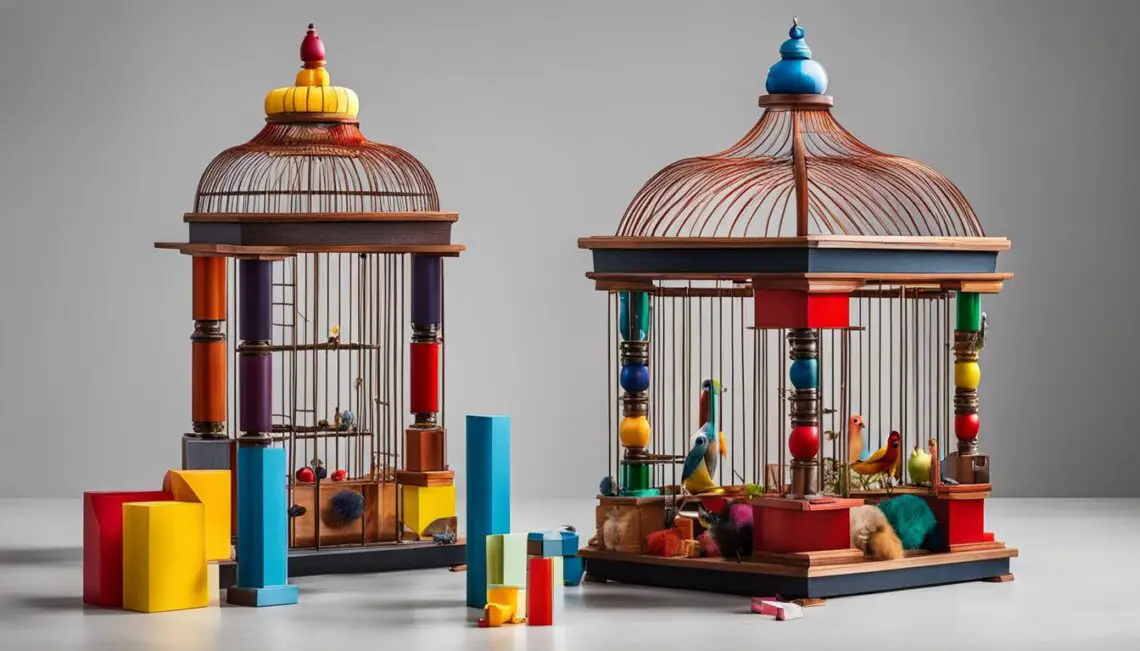
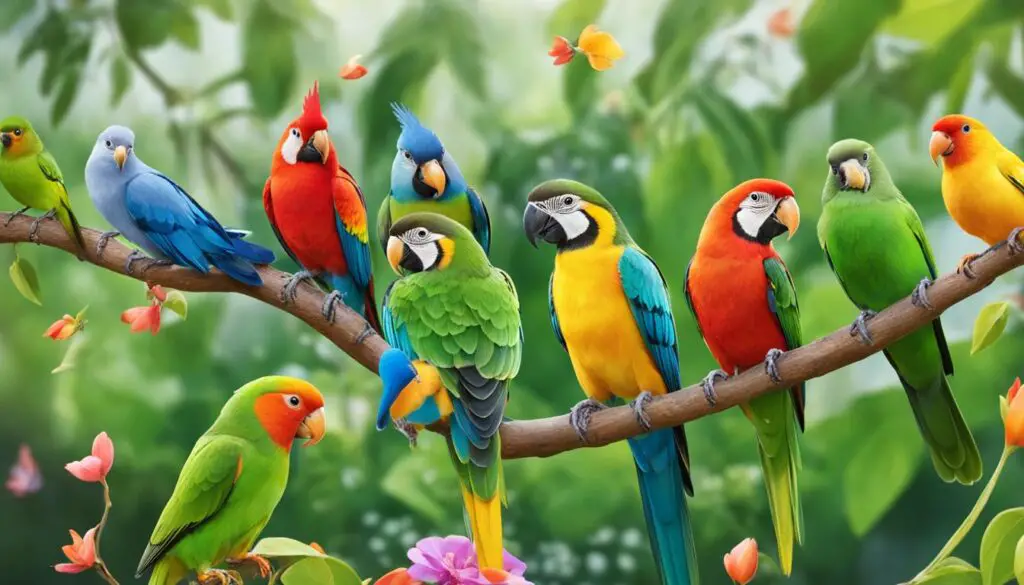
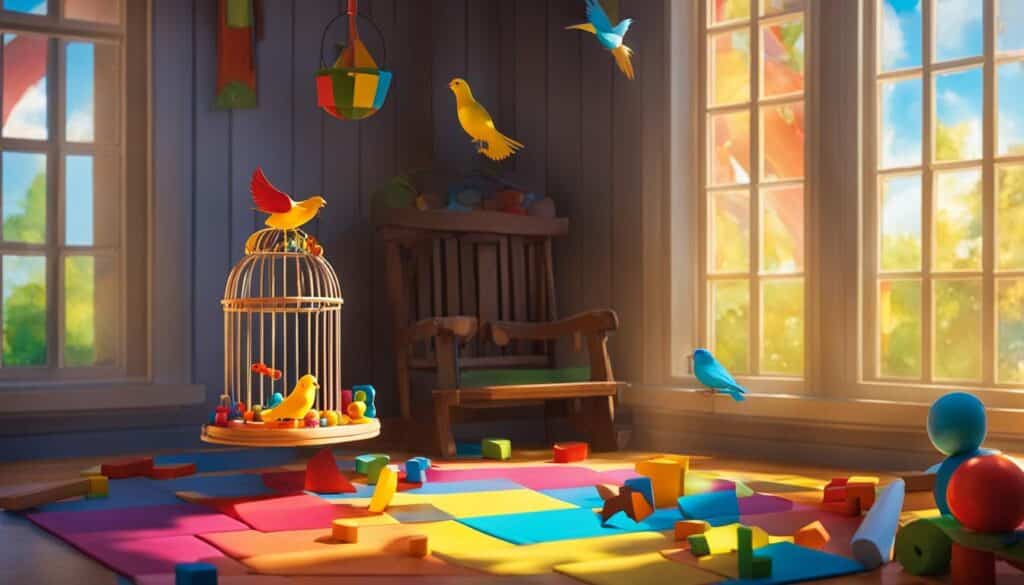
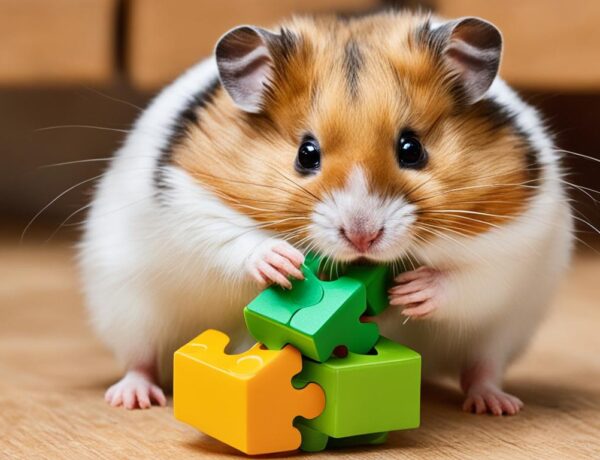
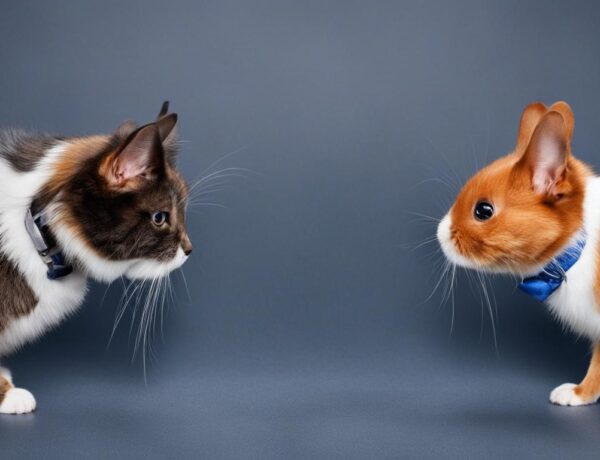

No Comments